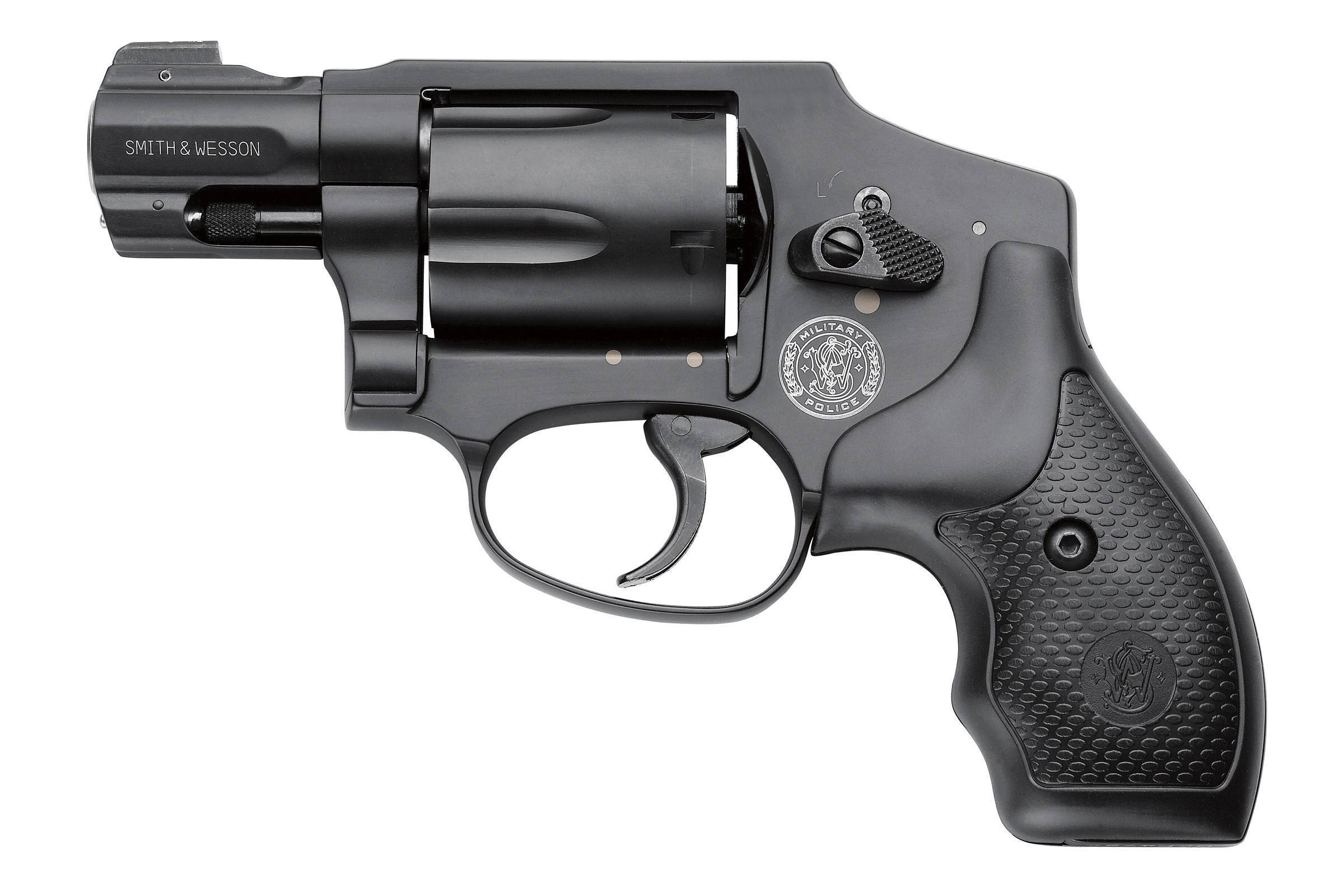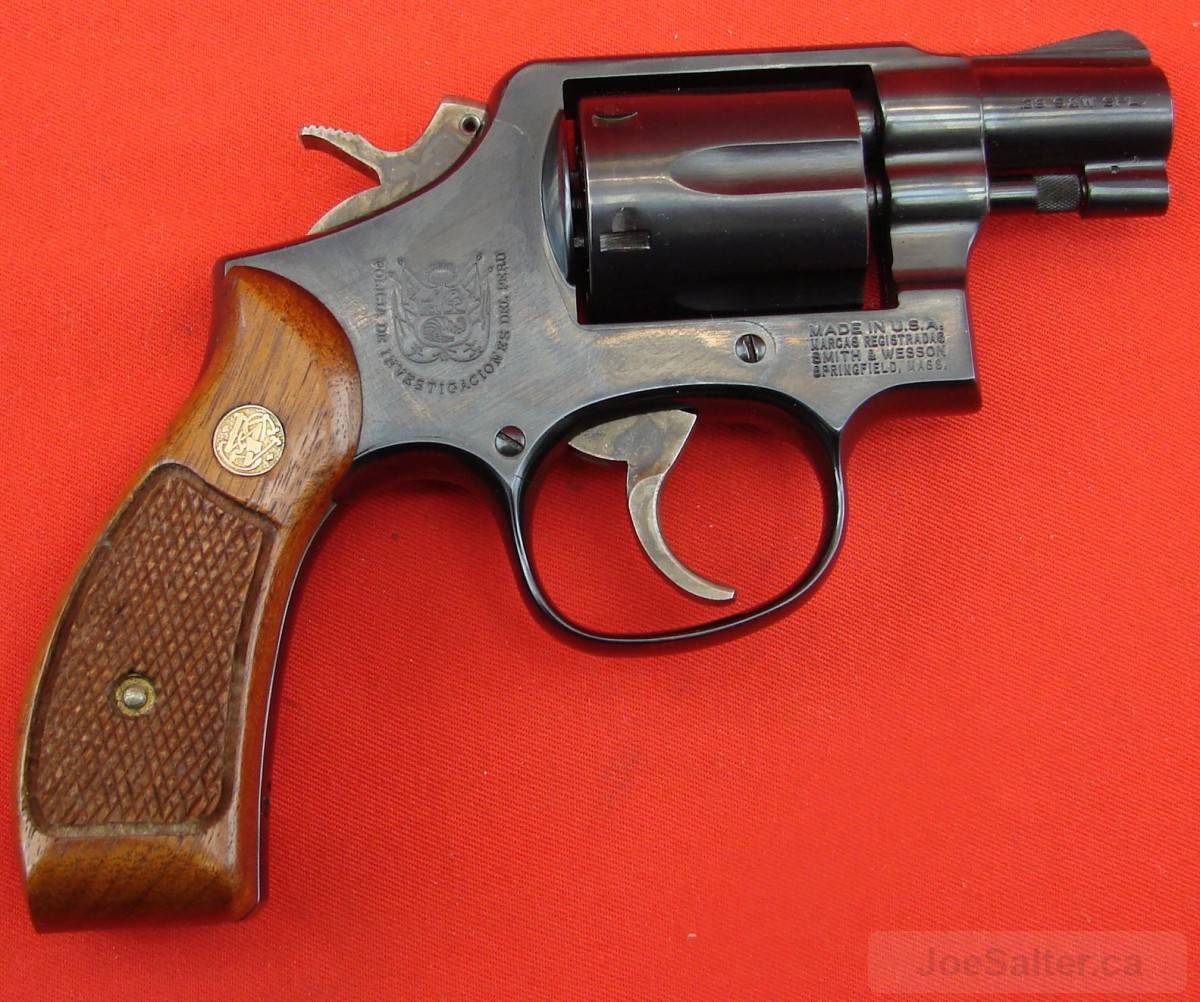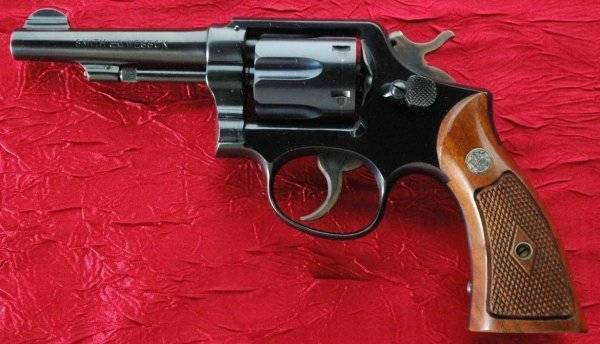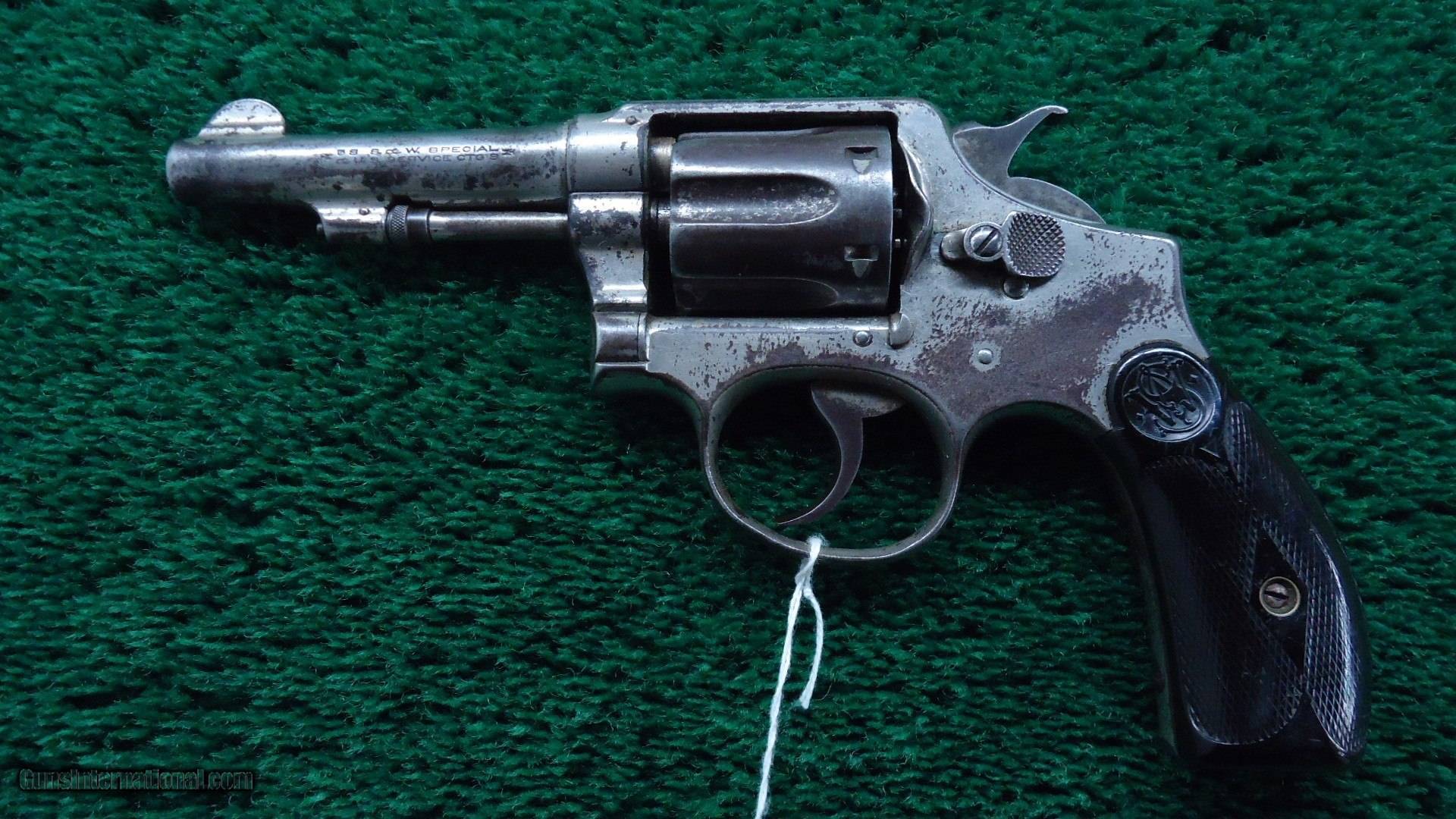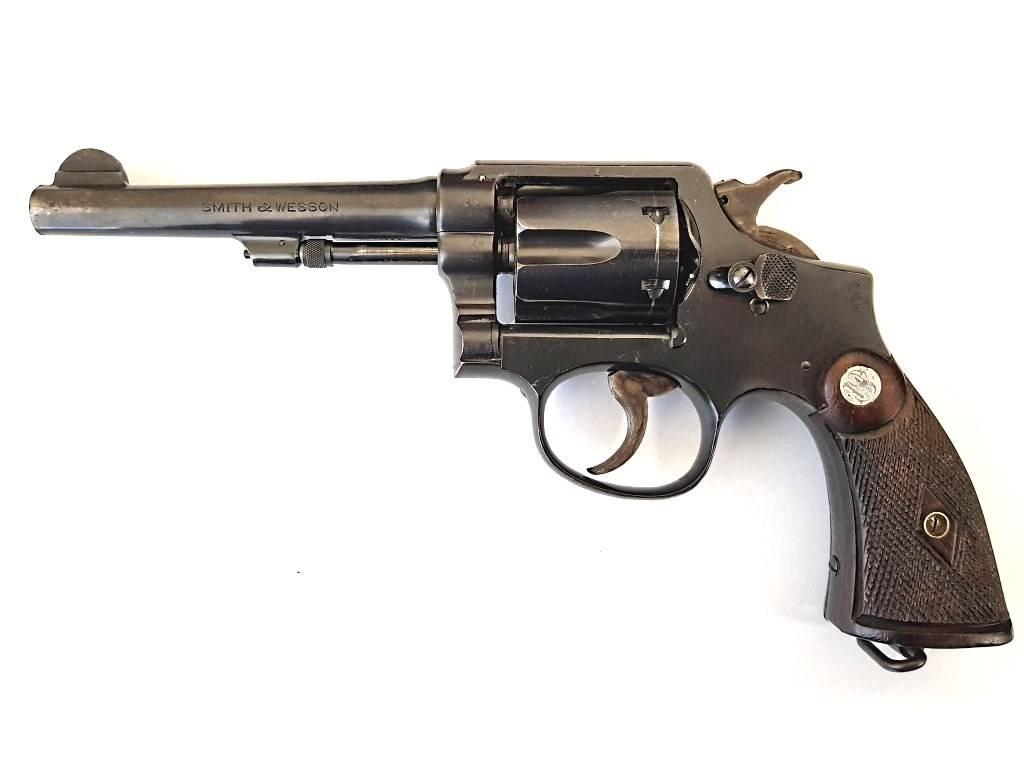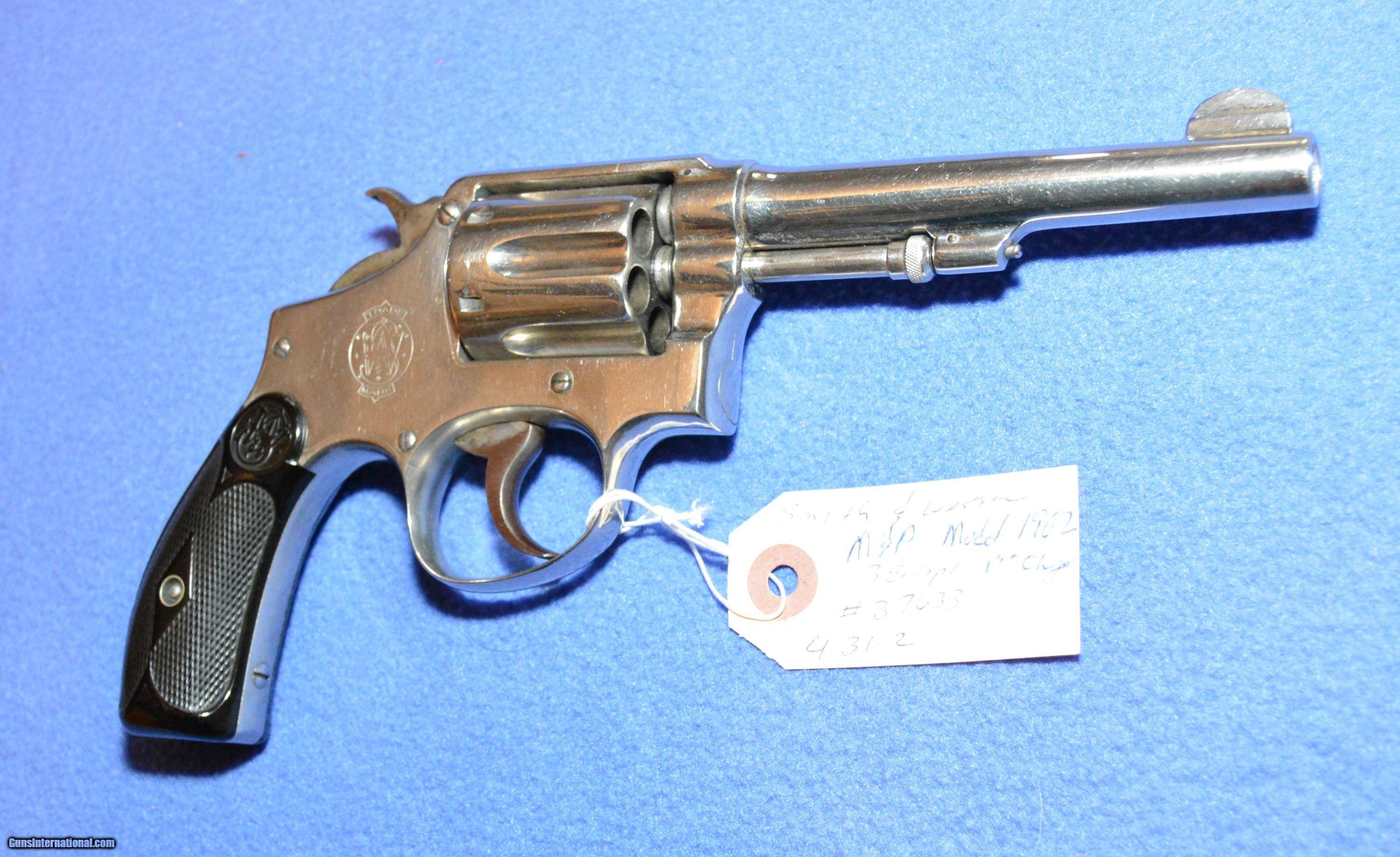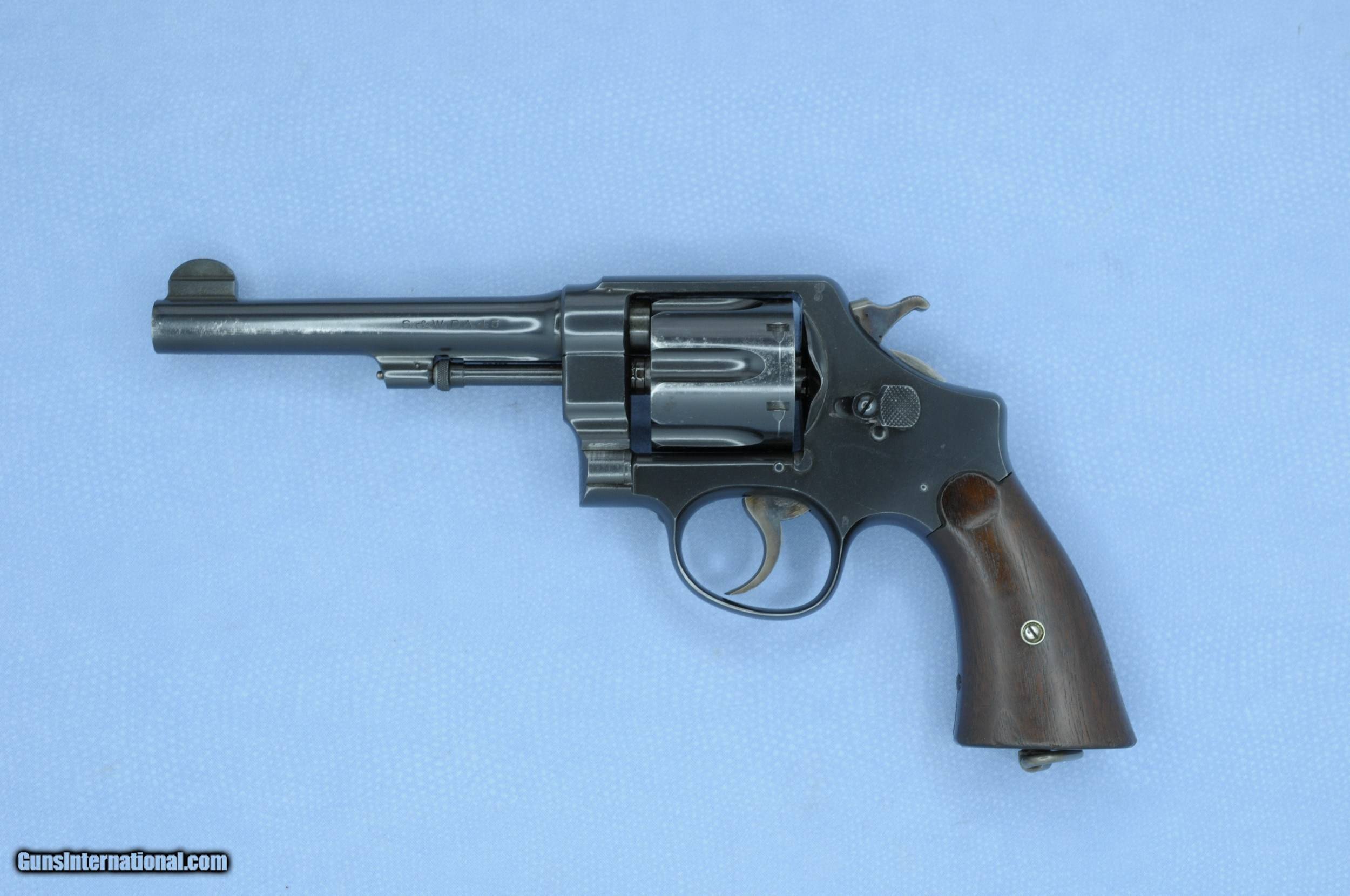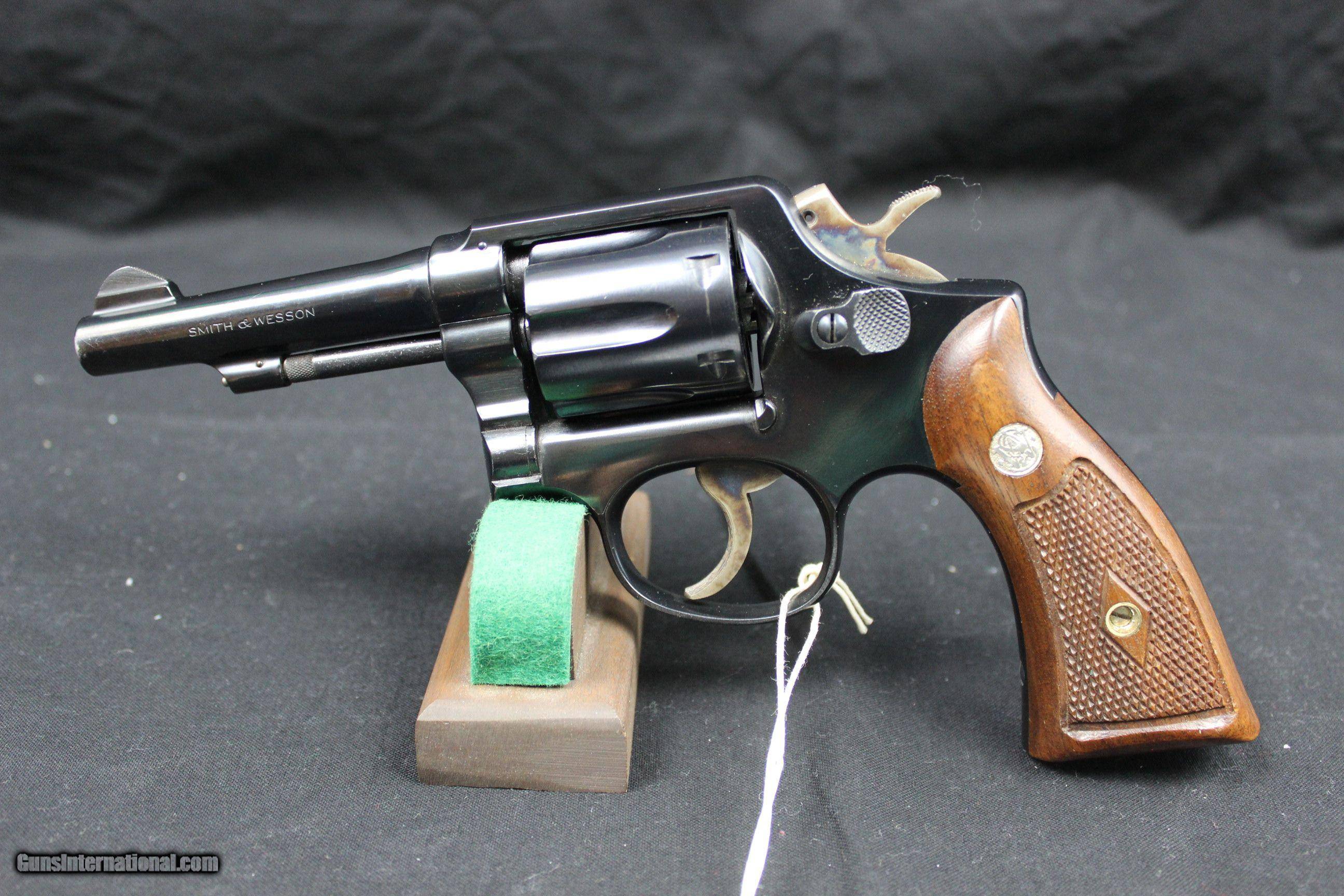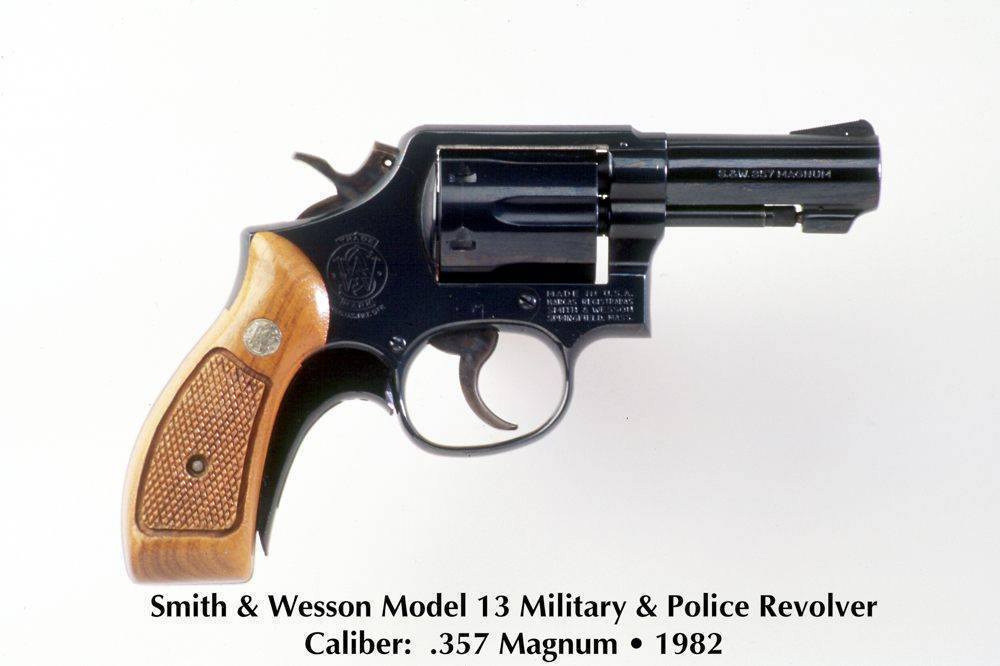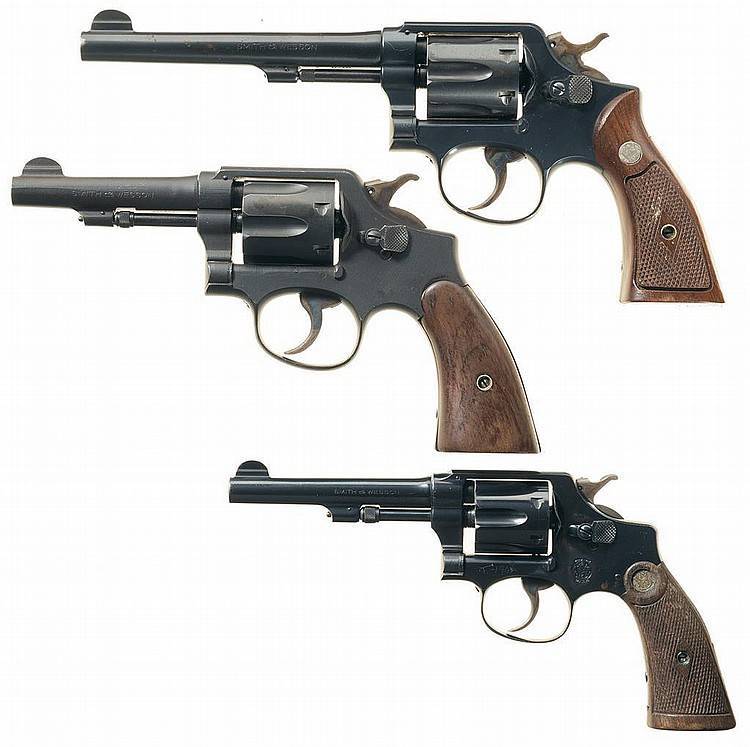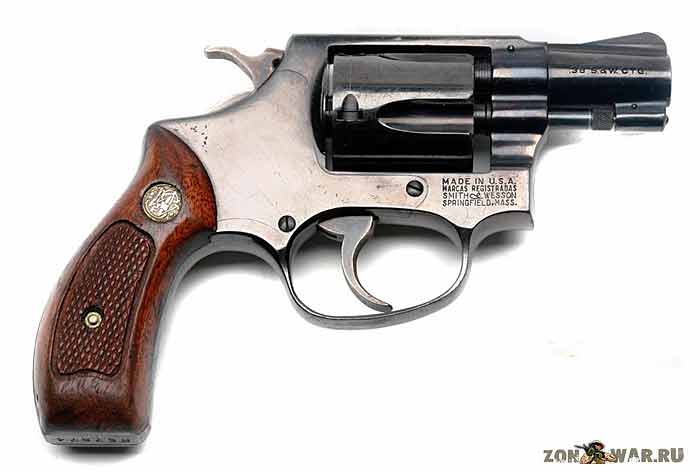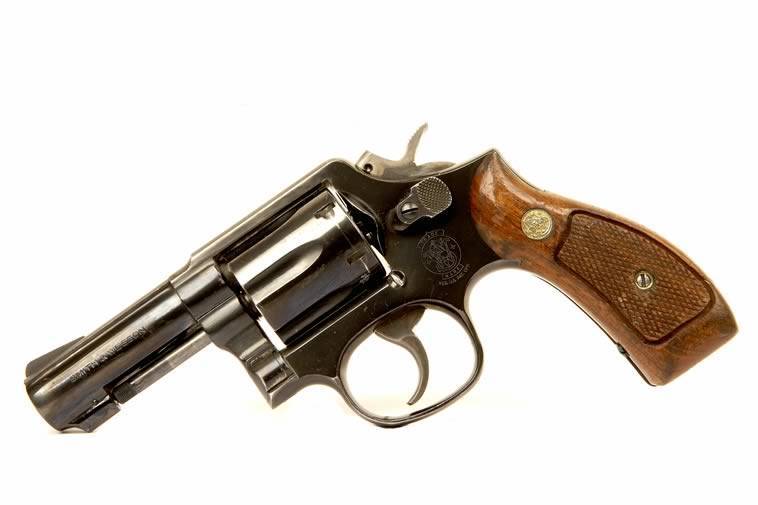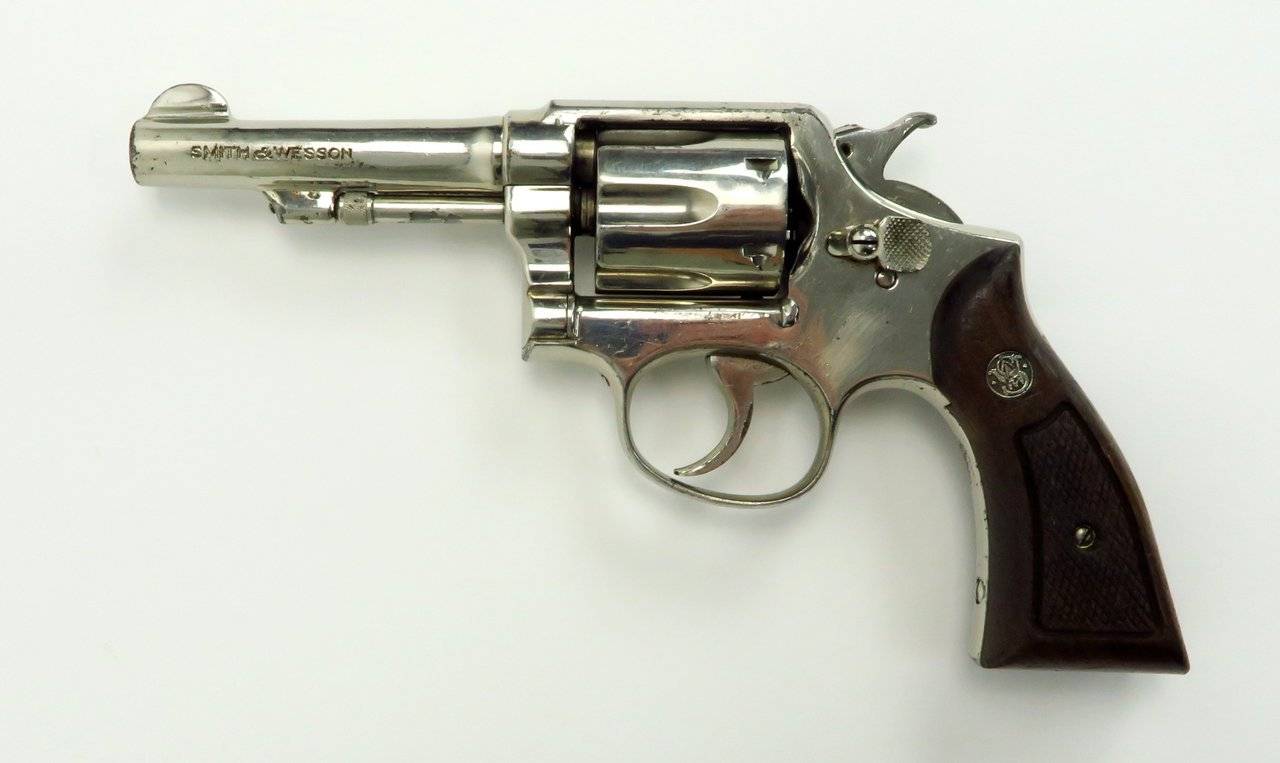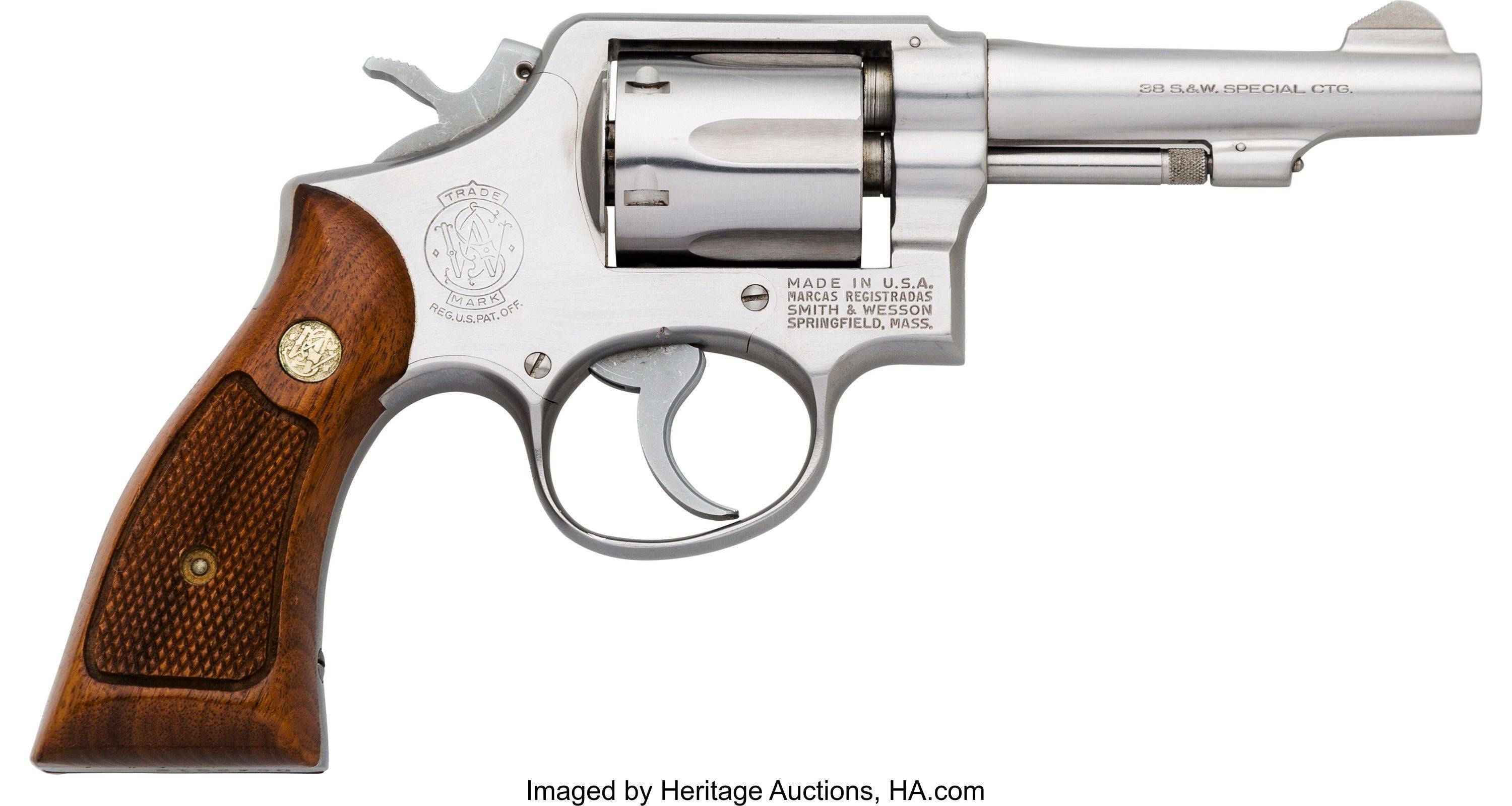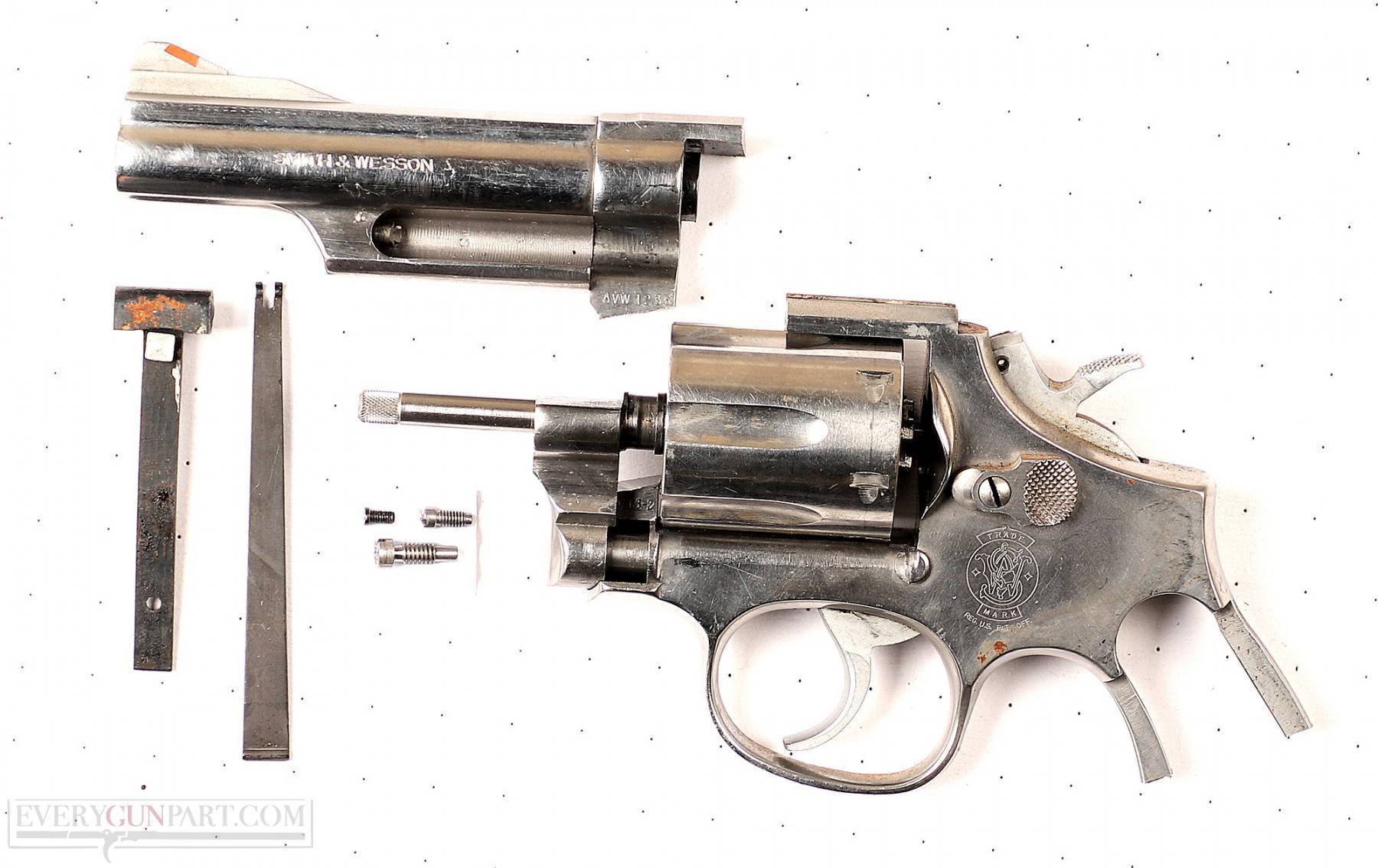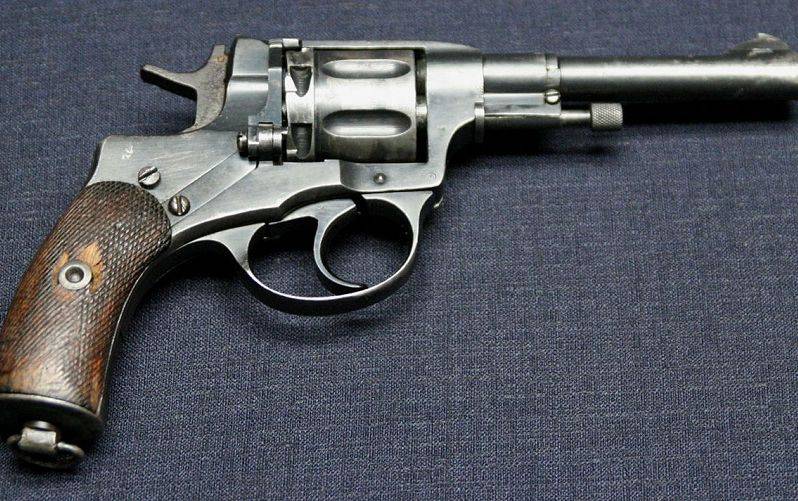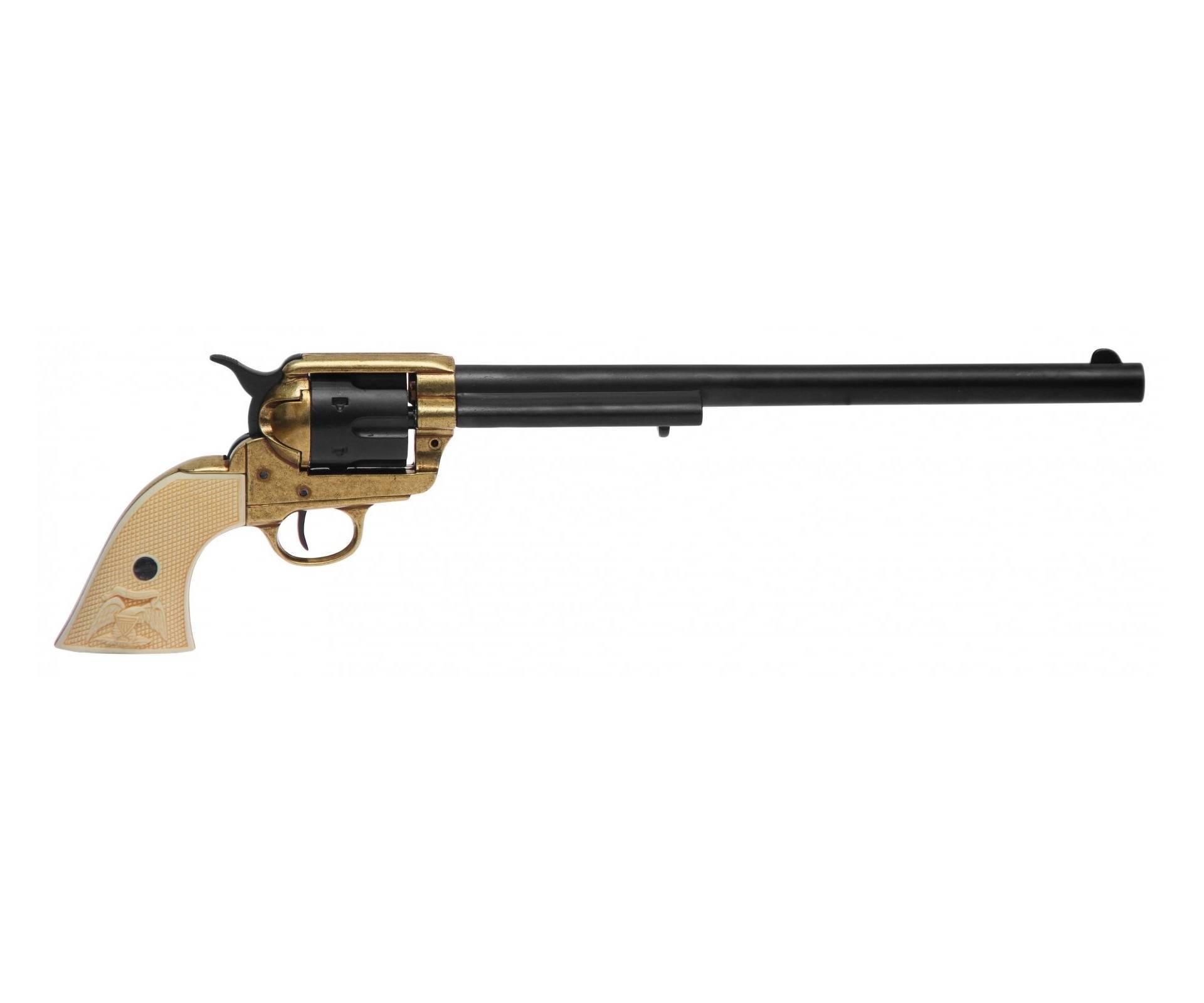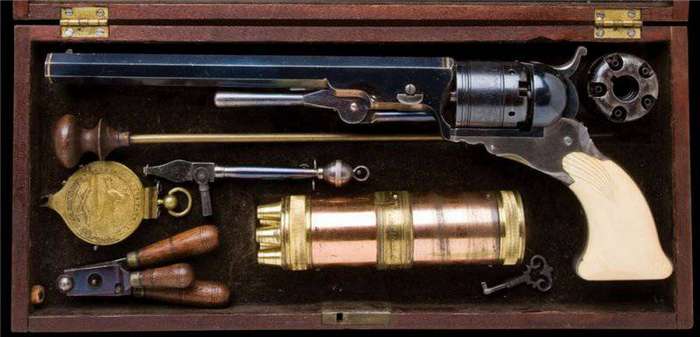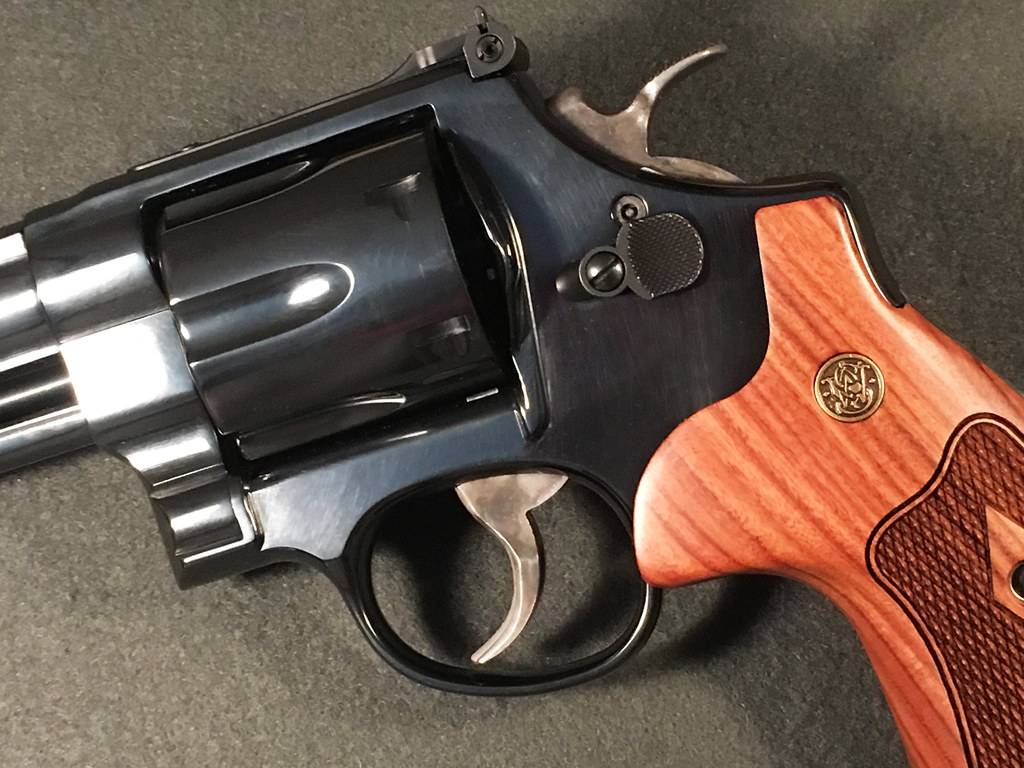Users
The “92 espagnol”, a Spanish-made copy of Smith & Wesson’s M&P as used by the Milice and chambered in 8mm French Ordnance.
Many of the S & W Military & Police revolvers were captured and used by some of the police forces, such as the Austrian Police, during the occupation after World War II. It is incorrect to refer to them as “the Model 10” as model numbers were not introduced by Smith & Wesson until 1957. Note that, during First World War, copies (slightly undersized) of the Military & Police were produced in Eibar and Guernica (Spain), in 8mm 1892 caliber for the French armies; the Milice man on the right holds such a copy.
The weapon is currently[] used by French cash couriers and banks, Disciplined Services of Hong Kong, Myanmar Police Force officers and other Burmese paramilitary units, Peruvian National Police and other police units.
A few copies of Smith & Wesson Model 10 were produced in Israel by Israel Military Industries (IMI) as the Revolver IMI 9mm. The weapon was chambered in the 9mm Luger caliber, instead of .38 Special, the original caliber. Also, Norinco of China has manufactured the NP50, which is a copy of the Smith & Wesson Model 64, since 2000.
List
- Algeria
- Australia – Was used by police across the country. Replaced by multiple different semi-automatic pistols between 1990-2010.
- Canada- Various Police Forces.
- China
- Costa Rica
- France
- Hong Kong- Hong Kong Police Force.
- Iceland- Armed officers of the Icelandic Police, Replaced by the Glock 17. The Icelandic Coast Guard has also used the Model 10 in the past.
- Iran
- Ireland- Armed units of the Garda Síochána (To be phased out).
- Israel
- Jamaica
- Japan – Used in some since late 1940s.
- Jordan
- Kingdom of Laos: Received from US Government during Laotian Civil War.
- Latvia
- Libya
- Malaysia
- Myanmar
- Nazi Germany – Hermann Goering’s sidearm.
- New Zealand
- Nicaragua – Used by police and security forces
- Norway – standard firearm of Norwegian Police Service from 1981 until about 2007.
- Paraguay – used during the Chaco War.
- Peru
- Philippines
- Portugal
- Saudi Arabia
- Singapore: Used by the Singapore Police Force before switching to the Taurus Model 85 revolvers in 2002 and the Model 85 revolver’s are still in service today.
- South Africa
- South Korea
- South Vietnam
- Vietnam
- Thailand
- Turkey- Emniyet Genel Müdürlüğü (Turkish National Police). Used between 1951 and the mid 1990s.
- United Kingdom – formerly a police-issue weapon.
- United States- Various Police Forces, Different prisons who had armed guards, Also used by the US Army.
References
- ^ Supica, Jim; Richard Nahas (2001). Standard Catalog of Smith & Wesson. Iola Wisconsin: Krause Publications. p. 1068.
- Boorman, Dean K., (2002), p. 46: “The .38 in Military and Police Model 10 has historically been the mainstay of the Smith & Wesson Company, with some 6,000,000 of this general type produced to date. It has been described as the most successful handgun of all time, and the most popular centerfire revolver of the 20th Century.”
- ^
- Shore, C. (Capt), With British Snipers to the Reich, Paladin Press (1988), p. 55
- Dunlap, Roy, Ordnance Went Up Front, Samworth Press (1948), p. 142
- ^
- Boorman, Dean K., (2002), p. 46: “The .38 in Military and Police Model 10 has historically been the mainstay of the Smith & Wesson Company, with some 6,000,000 of this general type produced to date. It has been described as the most successful handgun of all time, and the most popular centerfire revolver of the 20th Century.”
- ^
- ^
- []
- Sugiura, Hisaya (September 2015). “Pistols of the Japanese police in the postwar era”. Gun Professionals: 72–79.
- Conboy, Kenneth (23 Nov 1989). The War in Laos 1960–75. Men-at-Arms 217. Osprey Publishing. p. 15. ISBN .
Replacement
The S&W Model 10 revolver was a popular weapon before the semi-automatic pistol replaced the revolver in many police departments, as well as police units and armies.
- Certain units of the Ireland’s Gardaí (Irish Police) had replaced the Model 10 by the SIG Sauer P226 and Walther P99C semi-automatic pistols.
- Victoria Police replaced the K frame model 10 with the M&P in .40 S&W.
- New Zealand Police replaced the revolver with the Glock 17.
- New South Wales Police Force replaced the Model 10 with the Glock 22, Glock 23 and Glock 27.
- The weapon was used by Norway’s Home Guard until 1986 and the Norwegian Police Service until 2008, being replaced by the Heckler & Koch P30
- Portuguese police replaced the weapon by the Walther PP, subsequently by the Glock 19.
- Royal Malaysia Police used Model 10 as standard sidearm from early 1970 alongside Model 15 before it fully replaced by Beretta PX4 and Walther P99. It was used by Police Volunteer Reserve as standard sidearm and also by RELA Corps for training and self-defence purpose for their officers alongside with Smith & Wesson Model 36 2 inch barrel.
- The Model 10 was formerly the standard issue for many firearms-trained police officers in the United Kingdom and in many forces they were replaced by the Glock 17.
- The weapon was used by United States Army and United States Marine Corps, only to be replaced by the M1911A1 and the M9 pistols. Prior to the introduction of the M9 pistol in 1986, the Army issued Model 10s to helicopter crew members and female military police officers. Snub nose versions were used by Criminal Investigation Division (CID) agents.
Model 10 Variants
| Model | Year | Modifications |
|---|---|---|
| 10 | 1957 | Introduction |
| 10-1 | 1959 | Heavy barrel introduced |
| 10-2 | 1961 | Change extractor rod thread for standard barrel |
| 10-3 | 1961 | Change extractor rod thread for heavy barrel, change front sight width from 1/10″ to 1/8″ |
| 10-4 | 1962 | Eliminate trigger-guard screw on standard barrel frame |
| 10-5 | 1962 | Change sight width from 1/10″ to 1/8″ on standard barrel |
| 10-6 | 1962 | Eliminate trigger-guard screw on heavy-barrel frame |
| 10-7 | 1977 | Change gas ring from yoke to cylinder for standard barrel |
| 10-8 | 1977 | Change gas ring from yoke to cylinder for heavy barrel |
| 10-9 | 1988 | Replace yoke retention system, radius stud package, floating hand hammer nose bushing for standard barrel |
| 10-10 | 1988 | Replace yoke retention system, radius stud package, floating hand hammer nose bushing for heavy barrel |
| 10-11 | 1997 | MIM hammer/trigger and floating firing pin for standard barrel and HB heavy barrel Model M10 Park police model. |
| 10-12 | 1997 | MIM hammer/trigger + floating firing pin for heavy barrel |
| 10-13 | 2002 | Limited production 1899 commemorative edition |
| 10-14 | 2002 | Internal lock added |
| 10-14 | 2010 | Discontinued |
| 10-14 | 2012 | Reintroduced as part of the Classic Line |
.357 Magnum variations
After a small prototype run of Model 10-6 revolvers in .357 Magnum caliber, Smith & Wesson introduced the Model 13 heavy barrel in carbon steel and then the Model 65 in stainless steel. Both revolvers featured varying barrel weights and lengths—generally three and four inches with and without underlugs (shrouds). Production dates begin in 1974 for the Model 13 and end upon discontinuation in 1999. The Model 65 was in production from 1972-1999. Both the blued and stainless models were popular with police and FBI, and a variation of the Model 65 was marketed in the Lady Smith line from 1992 to 1999.
.38 S&W variations
From the late 1940s to early 1960s Smith & Wesson made a Variation of the Model 10 chambered for .38 S&W called the Model 11 that was sent to British Commonwealth countries to supply their armies and police forces. they were also sent to Canada as well.

